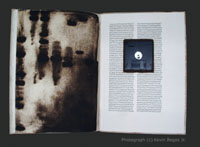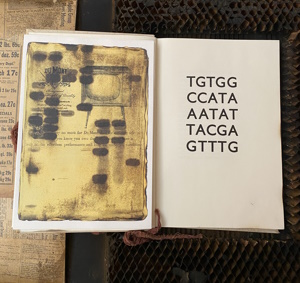William Gibson’s poem played from a 3½-inch diskette on a 1992-era Mac computer running the System 7 operating system. When the diskette ran, the text of the poem scrolled up the screen (accompanied by infrequent sound effects: a camera shutter click, a gun going off) while an encryption program on the diskette encoded each line and made the poem “disappear” after its first reading.
On December 9, 2008—the sixteenth anniversary of the original “Transmission” event debuting Agrippa—The Agrippa Files was aided by the Maryland Institute for Technology in the Humanities and the Digital Forensics Lab at University of Maryland, College Park, in unveiling an emulated run of the poem based on a bit-level copy of an original diskette loaned by collector Allan Chasanoff. The copy was played on a computer with software emulating the functions of a 1992-era Mac. For a discussion of the forensic process by which the code was accessed and emulated, see Matthew G. Kirschenbaum, with Doug Reside and Alan Liu, “No Round Trip: Two New Primary Sources for Agrippa.”
On December 9, 2008—the sixteenth anniversary of the original “Transmission” event debuting Agrippa—The Agrippa Files was aided by the Maryland Institute for Technology in the Humanities and the Digital Forensics Lab at University of Maryland, College Park, in unveiling an emulated run of the poem based on a bit-level copy of an original diskette loaned by collector Allan Chasanoff. The copy was played on a computer with software emulating the functions of a 1992-era Mac. For a discussion of the forensic process by which the code was accessed and emulated, see Matthew G. Kirschenbaum, with Doug Reside and Alan Liu, “No Round Trip: Two New Primary Sources for Agrippa.”


